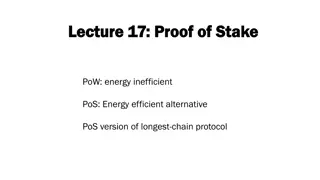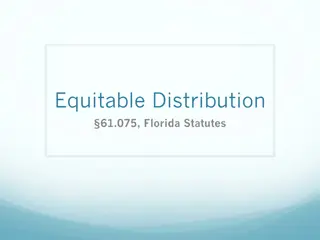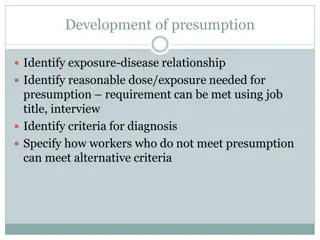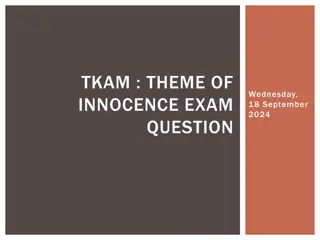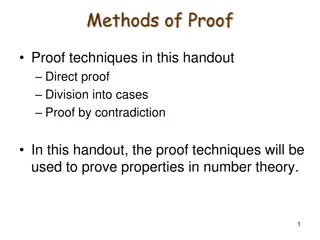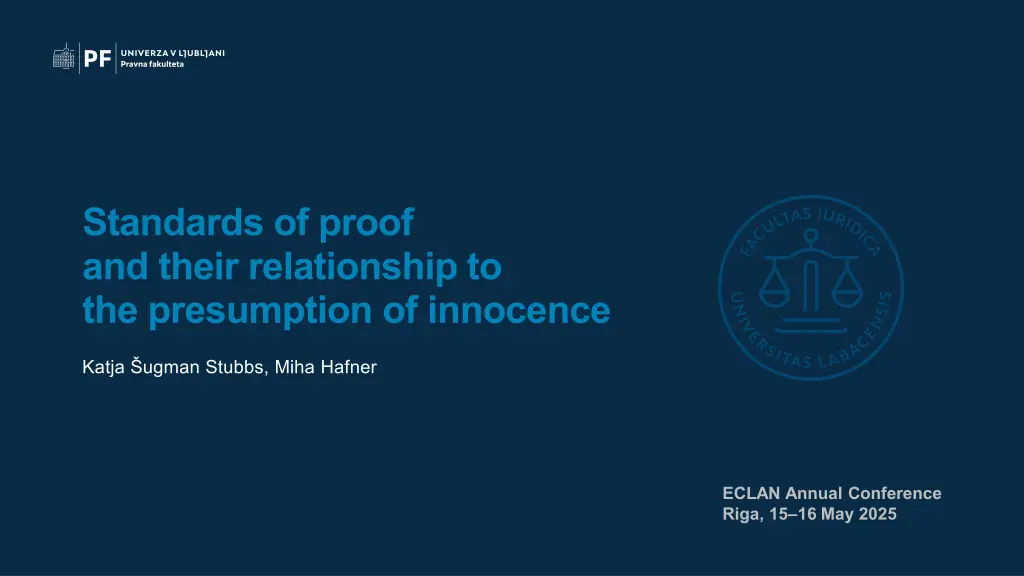
Understanding Standards of Proof and the Presumption of Innocence
Explore the intricate relationship between standards of proof and the presumption of innocence in criminal law, delving into the binary concept of innocence and guilt, burden of proof, and the different levels of standards of proof. Learn how these standards play a crucial role in determining guilt or innocence in legal proceedings.
Download Presentation

Please find below an Image/Link to download the presentation.
The content on the website is provided AS IS for your information and personal use only. It may not be sold, licensed, or shared on other websites without obtaining consent from the author. If you encounter any issues during the download, it is possible that the publisher has removed the file from their server.
You are allowed to download the files provided on this website for personal or commercial use, subject to the condition that they are used lawfully. All files are the property of their respective owners.
The content on the website is provided AS IS for your information and personal use only. It may not be sold, licensed, or shared on other websites without obtaining consent from the author.
E N D
Presentation Transcript
Standards of proof and their relationship to the presumption of innocence Katja ugman Stubbs, Miha Hafner ECLAN Annual Conference Riga, 15 16 May 2025
The Concepts of Innocence and Guilt Innocence can only be defined by the absence of guilt. Psychological research: Typically, people do not understand innocence/guilt as binary categories. People perceive innocence and guilt as two extremities on a continuum. People ascribe blame on a spectrum. People feel moral emotion (guilt, shame ) on a scale. W. A. Bouguereau: Innocence
Binary concept of innocence/guilt in criminal law Criminal law imposes binary thinking about innocence and guilt. Defendant can be either guilty or innocent. The consequence of presumption of innocence: Innocence is presumed, guilt needs to be proven (burden of proof) Standard of proof for guilty judgment set very high In dubio pro reo translates a wide spectrum of probabilities between innocent and guilty to innocent .
Innocent or guilty? green? Blue or
GREEN Green beyond reasonable doubt BLUE
Standards of proof Intimate conviction / beyond reasonable doubt = guilt 100 % Indicate the level of the burden of proof P r o b a b i l i t y o f g u i l t High standard of proof Reflect probability that criminal offence was committed / that defendant is guilty. Medium standard of proof Reflect the degree of the court s conviction in defendant s guilt. Low standard of proof No suspicion = innocence 0 %
The role of the standards of proof Two functions: 1) They represent thresholds for entering into different phases of a criminal procedure. 2) They are benchmarks for the burden of proof for various measures against defendant.
Standards of proof: two functions Measures (examples) Phases of crim. procedure Standards of proof 100 % Intimate conviction / beyond reasonable doubt Judgment of guilt Criminal sanction High standard of proof Pre-trial detention Probability of guilt Criminal trial Medium standard of proof House search Indictment Low standard of proof Police investigation Police interview No suspicion = innocence Right to be left alone 0 %
Standards of proof as partial presumptions of innocence Parallels between presumption of innocence and standards of proof: 100 % Final presumption of innocence adversarial principle in decision-making burden of proof on the prosecutor Presumption of innocence no. 3 Probability of guilt privilege against self-incrimination the court does not decide ex officio Presumption of innocence no. 2 decision on whether the evidentiary standard is met always precedes decisions on other questions Presumption of innocence no. 1 in dubio pro reo 0 %
Thank you for your attention. katja.sugman@pf.uni-lj.si miha.hafner@pf.uni-lj.si






